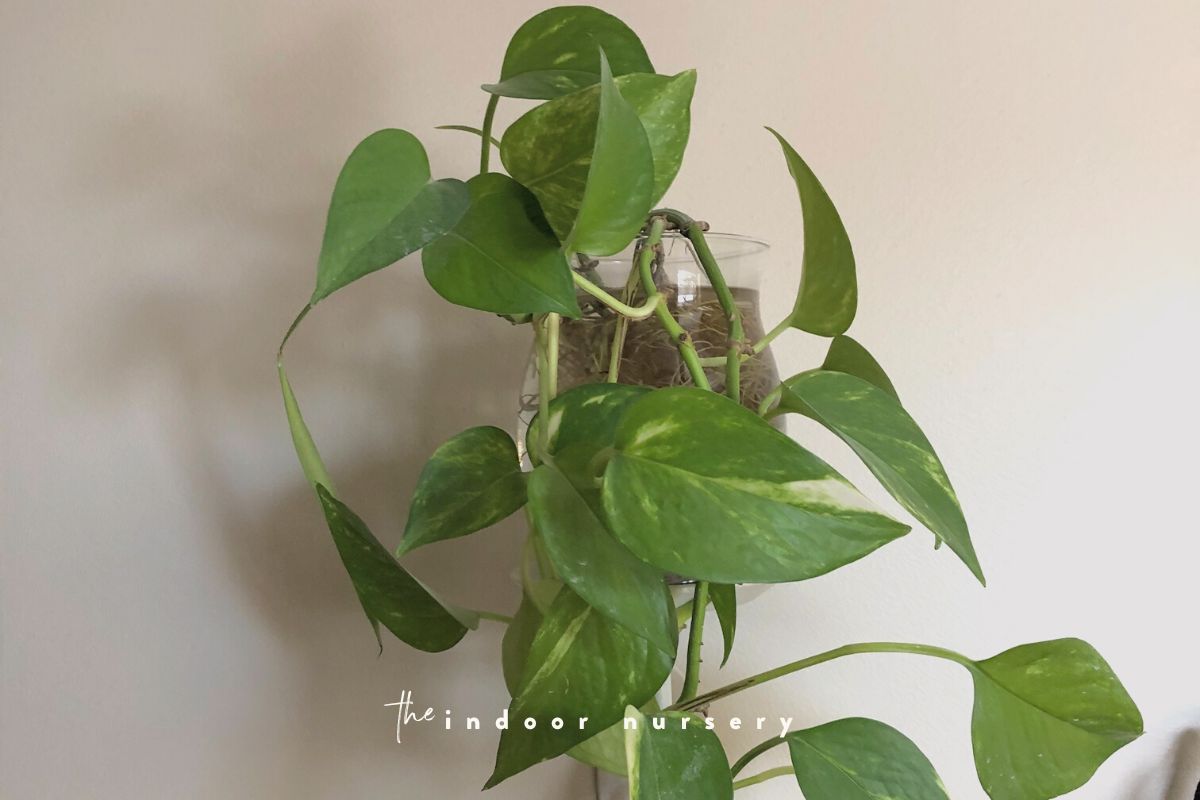Growing pothos plants comes with the territory when you’re a plant parent. The pothos plant is the most forgiving and the most flexible when it comes to the living conditions you provide for it…
… including growing pothos in water.
Truth: You could place any old pothos vines in water and they’ll likely grow. But if you follow these tips I outline below, then you’ll have your pothos growing for years to come.
And believe me, erh, my aunt. I visited her recently and she had decades old pothos plants living in water vases all around her home. I asked her how she was able to keep the same plant growing in water for so long and these are the tips she gave me.
Let’s learn how to grow pothos in water for a long time.
How to propagate pothos from a cutting
First things first, you need a healthy pothos plant to donate a healthy vine to the cause. Be selective and pick the pothos vine that looks strongest and oldest. Young pothos vines won’t have as much energy stored up in its flesh, which is what will initially supply nutrients to the new roots and leaves.
- Gather pothos cuttings: Look for healthy stems at least 6 inches long that have several leaves on each cutting. Make sure there are some aerial roots if the pothos have been growing in soil.
- Cut the stems diagonally: Use sterilized scissors or blade and cut just above a leaf node, the joint between the stem and a leaf, or an aerial root. This will encourage new roots and nodes to sprout. Many people like to dip the vine cutting in rooting hormone, which will stimulate growth.
- Place the cutting in a jar of filtered water: Fill the jar with filtered water and place the pothos cuttings in the water. Be sure that the aerial roots are submerged in water.
After new pothos roots develop, you have the option to transfer your pothos plants to soil. If you’d like to do this, then transfer them when the roots are a couple of inches. I recommend wetting the potting soil first and gently placing the growing pothos in the soil. I like to make a nice little nest of damp sphagnum moss to place the pothos cuttings into. This makes a nice transition from water to soil and ensures that the roots stay damp as they grow into their new environment.
How to Grow Pothos (Devil’s Ivy) in Water
Want to grow pothos in water? Well it’s about the easiest thing you can grow in water. Here are some tips for water-based life for your Devil’s Ivy plant.
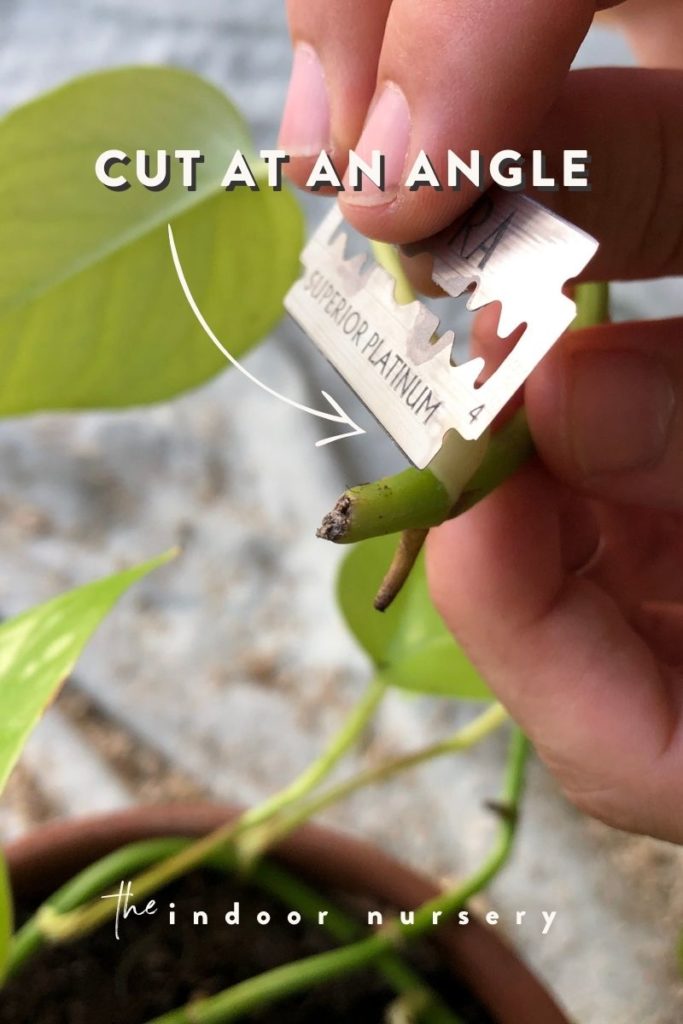
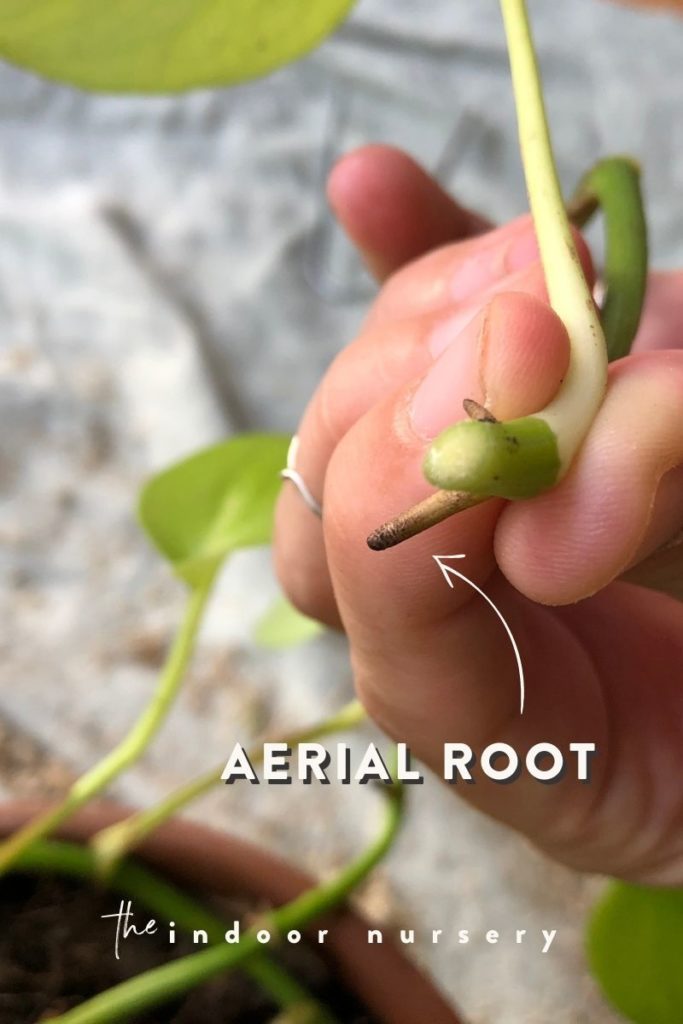
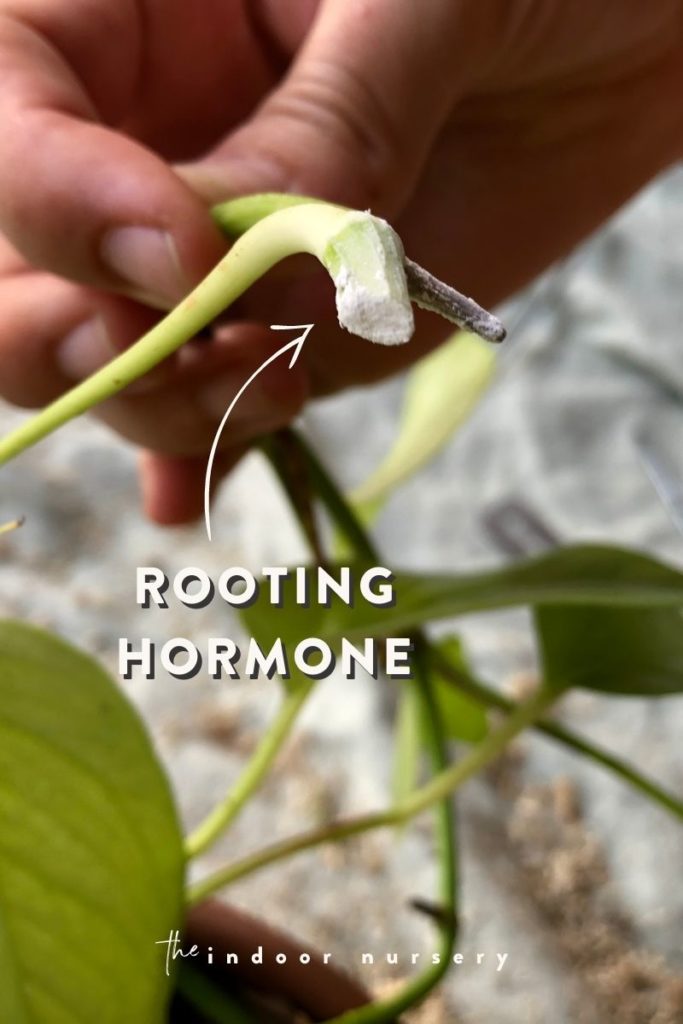
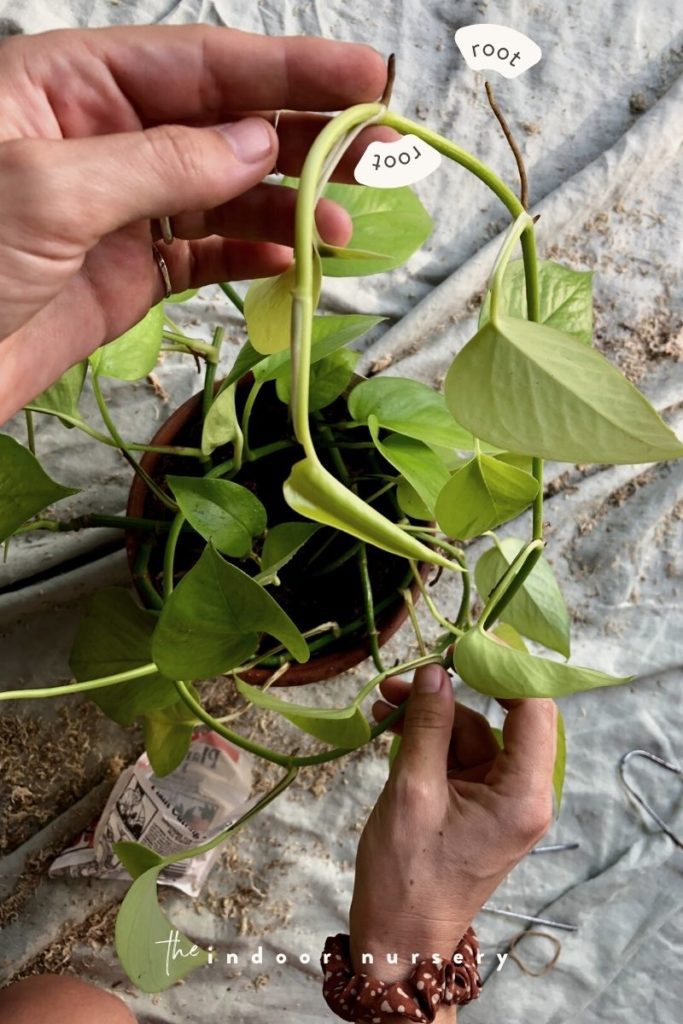
If starting with an existing plant growing in soil
If you have an existing plant that you’d like to rip out of transfer from potting soil to water, then you can do that too. Gently remove your pothos plant from its pot (I highly recommend a re-potting mat for this!) and brush away any soil gathered in its roots.
You might notice that several pothos plants are intertwined by the roots, in which case you can separate and plant in separate pots or in water. I like to rinse the pothos roots with filtered water to make sure that no soil particles remain on the roots. If these particles make it to the new water home, then they can be food for bacteria and other hidden organisms that might affect the health of the plant.
Fill the jar with filtered water
Place your pothos cutting in the jar of filtered water, making sure that the open cuts are underwater. Place the jar in a bright, indirect light. Make sure to turn the jar of water every few days to keep the water fresh. Change out the water every few weeks or when it looks murky. When the cuttings roots are well established, you can transfer them to soil or keep them in water.
PRO TIP: Avoid tap water, which can contain heavy metals, chemicals, and other contaminants that can affect both the pH level of the water as well as the health of the plant.
Add liquid fertilizer
You can add a liquid fertilizer to the water to provide essential nutrients to your growing pothos. Follow the directions on the label and adjust the dosage based on the size of the jar and the amount of water in it.
Place in bright indirect sunlight
Pothos plants love water and sunshine, but as floor dwelling plants, they’re used to filtered indirect light. Place them in a bright spot, avoiding direct sunlight.
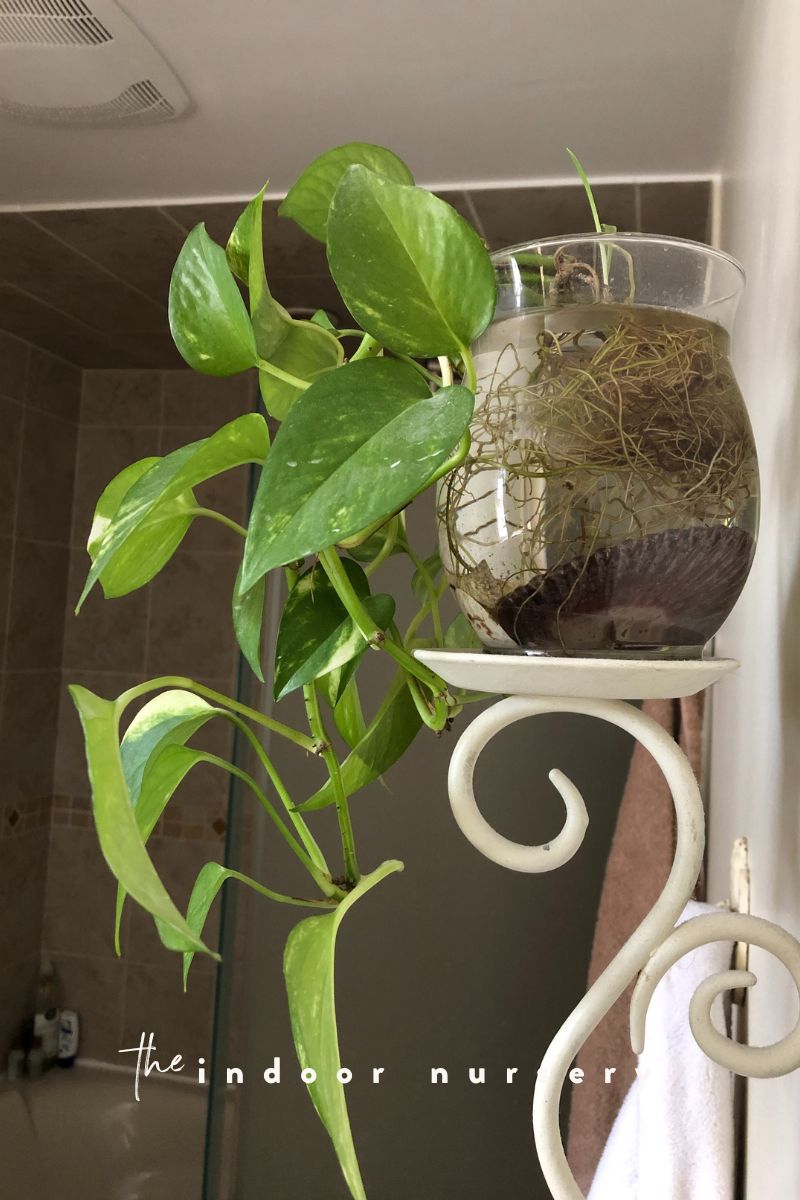
Trim the pothos
Trim your pothos when it gets too big or has lost its shape. Pinch off excess growth and remove any dead leaves. This will encourage more growth in the plant.
Change the water every 2–3 weeks
It’s important to change the water in your pothos every 2–3 weeks (or when you see algae buildup) to clean out any algae growth, which can suffocate pothos roots by using all of the oxygen in the water. The fresh water also brings fresh oxygen, which is important for root growth.
Add liquid fertilizer every 4–6 weeks
To give your pothos enough nutrients to stay healthy, add fertilizer to the water every 4–6 weeks. Make sure to follow the directions on the fertilizer label.
Common questions
Can pothos grow in water forever?
Yes, plants can live in water forever… as long as it is receiving the nutrients needed for new growth and survival.
Does pothos grow faster in water or soil?
It depends on several factors, such as the type of pothos, the water quality, and the amount of nutrients available. Pothos grown in water will typically grow a bit faster as long as the water is regularly changed and fertilized.
Can I grow pothos in water after starting it in soil?
Yes, you can transfer pothos from soil to water as long as it has established roots. The process for transferring it is the same as for propagating from cuttings.
How long does it take for pothos to root in water?
It can take several weeks for pothos to grow roots in water. It will usually start to form roots within 2–3 weeks, but it can sometimes take longer if the water isn’t kept clean and changed regularly.
More about pothos
- How Often To Water Pothos Plants (And When To Cut Back)
- Marble Queen Pothos Care Guide
- How To Make Pothos Fuller (In 5 Minutes)
- Our top pothos fertilizer picks for luscious vines
- Golden Pothos plant care: how to keep them happy
- Pothos root rot: what to look for and how to fix it
- How to grow pothos in water for *decades*

